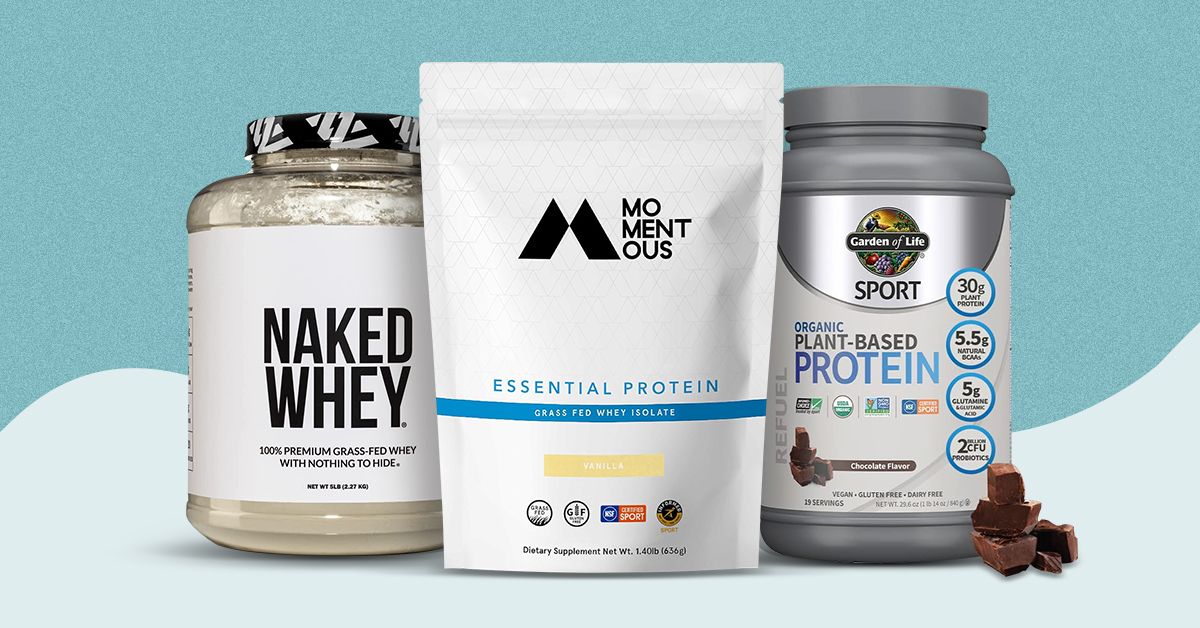9 Best Mass Gainer Protein Powders for Effective Muscle Building in 2024
Struggling to pack on muscle despite intense workouts and a solid diet? You’re not alone. Many fitness enthusiasts find it challenging to meet their calorie and protein needs solely through food. That’s where mass gainer proteins come into play. These supplements are designed to help you bulk up by providing a high-calorie blend of proteins, carbs, and fats.
Criteria for Selecting the Best Mass Gainer Proteins
When choosing mass gainers, you’ll want to consider several key factors that ensure you’re truly getting the best product for your needs.
Macronutrient Profile
Check the balance of proteins, carbs, and fats. Opt for mass gainers with a high protein content (e.g., 50g per serving) to support muscle growth. Ensure the carbohydrate-to-protein ratio suits your goals; typically, a 2:1 ratio is effective for most people.
Ingredient Quality
Look for natural ingredients. Avoid mass gainers with artificial additives, preservatives, and excessive sugars. Select products that use whole food sources for proteins and carbs, such as whey protein and oats.
Taste and Mixability
Prioritize flavor and ease of mixing. Choose mass gainers that come in flavors you enjoy and mix well with water or milk without clumping. Reading reviews can help identify products with the best taste and texture.
1. Best Overall Mass Gainer Protein
Finding the best mass gainer protein can be tough, but with the right information, you can make an informed choice. From key features to pros and cons, here’s what you need to know.
Key Features
Key features often distinguish top-tier mass gainers, ensuring they meet your nutritional needs and preferences.
- High Caloric Content: Provides over 1,200 calories per serving to help you gain mass efficiently.
- Optimal Macronutrient Ratio: Contains a balanced ratio of protein to carbohydrates, typically 1:3 or 1:4, for muscle growth and sustained energy.
- Quality Ingredients: Uses natural and clean ingredients, such as high-quality whey protein, maltodextrin, and essential fatty acids.
- Amino Acid Profile: Includes a full spectrum of amino acids, particularly BCAAs (Branched-Chain Amino Acids), to support muscle recovery.
- Digestive Enzymes: Enriched with enzymes like protease and amylase to enhance digestion and nutrient absorption.
- Flavor Varieties: Offers multiple, enjoyable flavors to keep your supplementation routine interesting.
- Easy Mixability: Mixes well with water or milk, avoiding unpleasant clumps and ensuring smooth consumption.
Pros and Cons
Pros and cons help you weigh the benefits and drawbacks of the best overall mass gainer protein.
Pros:
- Effective Weight Gain: Aids in rapid and efficient muscle mass gain.
- Nutrient-Rich: Provides a comprehensive nutrient profile, including vitamins and minerals.
- Muscle Recovery: Supports quicker muscle recovery due to its amino acid content.
- Energy Boost: Offers sustained energy throughout the day, ideal for intense workouts.
- Convenient: Serves as a convenient option for those struggling to meet their calorie needs through food alone.
- Cost: May be more expensive compared to other types of protein supplements.
- High Sugar Content: Some products might contain added sugars, which can be a concern for health-conscious individuals.
- Potential Digestive Issues: Can cause digestive discomfort for those sensitive to high-calorie and high-protein intake.
- Flavor Fatigue: Over time, you might get tired of the available flavors, even if they are enjoyable initially.
By evaluating these features and weighing the pros and cons, you can choose a mass gainer protein that best fits your needs and helps you effectively achieve your fitness goals.
2. Best for Taste
Taste is essential when it comes to mass gainers since you’ll need to consume them regularly. A product with a pleasurable flavor ensures consistent use and makes your muscle-building journey enjoyable.
Key Features
- Wide Flavor Variety: Choose a mass gainer with multiple flavor options like chocolate, vanilla, and strawberry to prevent boredom.
- Natural Sweeteners: Opt for products that use natural sweeteners like stevia or monk fruit instead of artificial ones.
- Mixability: Ensure the powder mixes well with both water and milk without clumping, enhancing the drinking experience.
- Texture: Check for a smooth texture free from graininess, which makes the shake more palatable.
Pros and Cons
Pros:
- Enjoyable Taste: Excellent flavor makes it easier to stick to your supplementation routine.
- Variety: Multiple flavors reduce the risk of flavor fatigue.
- Pleasant Texture: Smooth texture improves the overall drinking experience.
- Cost: Better-tasting products are sometimes pricier.
- Added Sugars: Some flavorful options might contain high amounts of added sugars.
- Artificial Additives: Beware of products with artificial flavors and sweeteners, which may have adverse health effects.
3. Best for Clean Ingredients
Prioritizing clean ingredients in your mass gainer protein can make a significant difference in your health and performance. Here’s what you need to know to choose the best one:
Key Features
Organic Sources: Opt for mass gainers made with organic ingredients like organic whey, rice, or pea protein. They’re free from harmful pesticides.
No Artificial Additives: Look for products without artificial sweeteners, colors, or preservatives. These additives can trigger unwanted reactions and affect overall wellness.
Minimal Ingredients List: Clean ingredient mass gainers usually have a shorter ingredient list. Focus on products with recognizably named ingredients.
Non-GMO and Gluten-Free: Choose mass gainers that are non-GMO and gluten-free, especially if you have specific dietary restrictions or sensitivities.
Pros and Cons
Pros:
- Health Benefits: Clean ingredient mass gainers support your overall health due to the absence of harmful chemicals and artificial additives.
- Fewer Side Effects: Reduced risk of digestive issues and allergic reactions, as they often use natural, hypoallergenic sources.
- Environmentally Friendly: Organic and non-GMO practices are better for the environment.
Cons:
- Cost: Generally, mass gainers with clean ingredients tend to be pricier.
- Limited Flavors: Natural products might come in fewer flavor options compared to those with artificial additives.
By focusing on these key features and weighing the pros and cons, you can select a mass gainer protein that supports both your fitness goals and overall well-being.
4. Best for High Calorie Content
When you’re aiming to gain muscle mass, higher calorie intake becomes crucial. Here, we delve into the best mass gainers known for their high-calorie content.
Key Features
- Caloric Density: Choose a mass gainer offering over 1,000 calories per serving. This boosts your overall daily caloric intake effectively.
- Carbohydrate-Protein Ratio: Look for a carb-to-protein ratio of around 3:1 or 4:1, which optimizes energy supply and muscle recovery.
- Healthy Fats: Select options with quality fats like MCTs, flaxseed oil, or avocado oil. They provide sustained energy and support hormone production.
- Micronutrients: Ensure the product includes essential vitamins and minerals. These help in overall muscle health and proper metabolic function.
Pros and Cons
- Calorie Boost: Easily meet high-calorie goals without excessive food consumption.
- Muscle Growth: High carbs and protein promote faster muscle growth and repair.
- Convenience: Quick and easy to prepare, perfect for busy schedules.
- Higher Sugar Content: Some high-calorie gainers have added sugars, which might not be suitable for all.
- Digestive Issues: Large servings can cause digestive discomfort for some users, especially if not consumed properly.
- Cost: Typically, high-calorie mass gainers come at a higher price point compared to regular protein supplements.
5. Best for Digestibility
When choosing a mass gainer protein, digestibility is crucial for those with sensitive stomachs or digestive issues.
Key Features
High-quality ingredients and digestive enzymes ensure easy digestion and absorption of nutrients. Single-source proteins like whey or plant-based options reduce the risk of bloating. Inulin and probiotics promote gut health.
Pros and Cons
Digestible mass gainers help prevent stomach discomfort and bloating. They enhance nutrient absorption and overall gut health. However, they might have a higher price point, and their availability could be limited compared to other options.
6. Best Budget-Friendly Mass Gainer
Finding a mass gainer that offers value without breaking the bank is important for many fitness enthusiasts. Here’s a look at the key features, pros, and cons of the best budget-friendly mass gainer.
Key Features
- Affordable Price: Budget-friendly mass gainers generally cost less than $30 for a month’s supply, ensuring they’re accessible to everyone.
- Decent Calorie Content: They provide around 500-700 calories per serving, giving you the extra boost you need without overloading your budget.
- Balanced Macronutrients: These gainers typically offer a good balance of carbohydrates, proteins, and fats to support muscle growth and recovery.
- Basic Ingredients: Expect a simpler ingredient list with essential nutrients, avoiding unnecessary additives or fillers.
- Good Mixability: Despite being more affordable, they often mix well with water or milk for convenience, minimizing clumps and making it easier to consume on the go.
Pros and Cons
Pros:
- Cost-Effective: You get the nutritional support you need without spending a fortune, making them suitable for students or those on a tight budget.
- Accessible: Budget-friendly options are widely available at various retailers, both online and in-store.
- Adequate Nutrition: They deliver sufficient calories and nutrients to aid in mass gain and muscle recovery, catering to basic fitness needs.
- Limited Flavor Options: These mass gainers might not offer the variety of flavors found in higher-end products.
- Fewer Added Nutrients: You may miss out on additional beneficial nutrients like digestive enzymes or probiotics, which can aid in better nutrient absorption and digestion.
- Lower Quality Ingredients: The focus on affordability might mean lower-quality ingredients compared to premium options, potentially affecting overall nutrient absorption and efficacy.
7. Best for Quick Results
If you’re looking to gain mass quickly, you’ll need a mass gainer that offers effective and fast results. Here’s what you should know about the best mass gainer for quick results:
Key Features
High Caloric Content
A mass gainer offering at least 1,000 calories per serving will help you increase your daily caloric intake swiftly.
Optimized Carb-Protein Ratio
Aim for a 3:1 or 2:1 carb-to-protein ratio to ensure rapid muscle recovery and growth.
Fast-Digesting Proteins
Whey protein isolate or hydrolysate digests quickly, making it ideal for post-workout.
Added Creatine
Creatine monohydrate included in the formula boosts strength and muscle mass rapidly.
Pros and Cons
- Quick Muscle Gains: Noticeable gains usually within a few weeks.
- Immediate Energy Boost: High carbohydrate content provides quick energy replenishment.
- Enhanced Recovery: Fast-digesting proteins and creatine aid in muscle repair.
- Potential for Fat Gain: High calories can lead to fat gain if not balanced with exercise.
- Pricey: Products with added creatine and high-quality proteins might be more expensive.
- Digestive Issues: Fast-digesting proteins can cause bloating or discomfort for some users.
8. Best Natural Mass Gainer
If you’re looking for a mass gainer with natural ingredients, this section’s for you. We’ll explore the key features and the pros and cons of choosing a natural mass gainer.
Key Features
- Organic Ingredients: Opt for mass gainers made with organic ingredients. These offer cleaner nutrition by avoiding pesticides and artificial chemicals.
- Non-GMO: Choose products that are non-GMO to ensure you’re consuming natural, unaltered ingredients.
- Whole Foods: Look for gainers that use whole foods like oats, quinoa, and sweet potato for their carbohydrate sources.
- No Artificial Additives: Ensure the gainer is free from artificial flavors, colors, and preservatives, keeping your diet clean and natural.
- Plant-Based Proteins: Consider mass gainers that use plant-based proteins like pea, rice, or hemp. These are easier to digest and suitable for various diets, including vegan.
Pros and Cons
- Clean Nutrition: You get cleaner nutrition with fewer chemicals and additives, which is better for overall health.
- Digestibility: Natural ingredients are often easier on your digestive system, reducing bloating and discomfort.
- Environmentally Friendly: Organic and non-GMO products are better for the environment, supporting sustainable farming practices.
- Allergy-Friendly: These products are often free from common allergens like gluten and soy, making them suitable for sensitive individuals.
- Higher Cost: Expect to pay more for natural ingredients, which can make these products less budget-friendly.
- Limited Flavors: Natural mass gainers often have fewer flavor options, which might not suit everyone’s taste preferences.
- Availability: Finding high-quality natural mass gainers can be challenging as they’re less widely available compared to conventional ones.
9. Best Low-Sugar Mass Gainer
If you’re mindful of your sugar intake, finding a mass gainer with low sugar content is crucial.
Key Features
A low-sugar mass gainer boasts a minimal sugar content per serving, often under 5 grams. High-quality protein sources like whey or casein are typically used. Balanced macronutrients ensure you get the right mix of protein, carbs, and fats without excess sugars. Look for added fiber to aid digestion and keep you feeling full. Natural sweeteners like stevia or monk fruit extract often replace artificial sweeteners. Some brands also include digestive enzymes to enhance nutrient absorption and reduce bloating.
Pros and Cons
Pros
- Maintains low sugar intake, supporting overall health.
- Promotes lean muscle gains without unwanted fat storage.
- Includes high-quality proteins and balanced macronutrients.
- Uses natural sweeteners, avoiding artificial additives.
- Often contains added fiber for better digestion and satiety.
- May come at a higher price due to premium ingredients.
- Limited flavor options compared to higher sugar alternatives.
- Potentially slower muscle gain due to lower carb content.
By focusing on these aspects, you can choose a low-sugar mass gainer that aligns with your health and fitness goals.
How to Use Mass Gainer Proteins Effectively
Best Practices for Consumption
Timing: Drink your mass gainer shake immediately after workouts to replenish glycogen and promote muscle growth. Another optimal time is between meals to boost your daily calorie intake.
Serving Size: Follow the recommended serving size on the product label, tailoring the amount based on your caloric needs and fitness goals.
Mixing: Blend your mass gainer with water or milk for a smoother texture. Use a blender for lump-free consistency.
Additional Nutrition: Enhance the nutritional value by adding fruits, nuts, or nut butters to your shake. This provides extra vitamins, minerals, and healthy fats.
Hydration: Stay hydrated by drinking plenty of water. Mass gainers are calorie-dense, and proper hydration aids digestion and absorption.
Common Mistakes to Avoid
Overconsumption: Avoid taking more than the recommended serving size. Too many calories can lead to unwanted fat gain.
Skipping Meals: Don’t skip regular meals. Mass gainers should supplement, not replace, a balanced diet.
Inconsistent Use: Use your mass gainer consistently. Missing doses can hinder your progress toward your fitness goals.
Ignoring Diet Quality: Don’t rely solely on mass gainers. Incorporate whole foods rich in lean proteins, healthy fats, and complex carbs.
Lack of Exercise: Avoid using mass gainers without sufficient exercise. Without a proper workout regimen, the excess calories may not translate into muscle gain.
Conclusion
Choosing the right mass gainer protein can significantly impact your fitness journey. By focusing on clean ingredients and understanding the key features to look for you can ensure you’re making a healthy choice. Remember the importance of digestibility and how to use these supplements effectively. Avoid common pitfalls like overconsumption and inconsistent use. With the right mass gainer protein and smart practices you’ll be well on your way to achieving your fitness goals.






